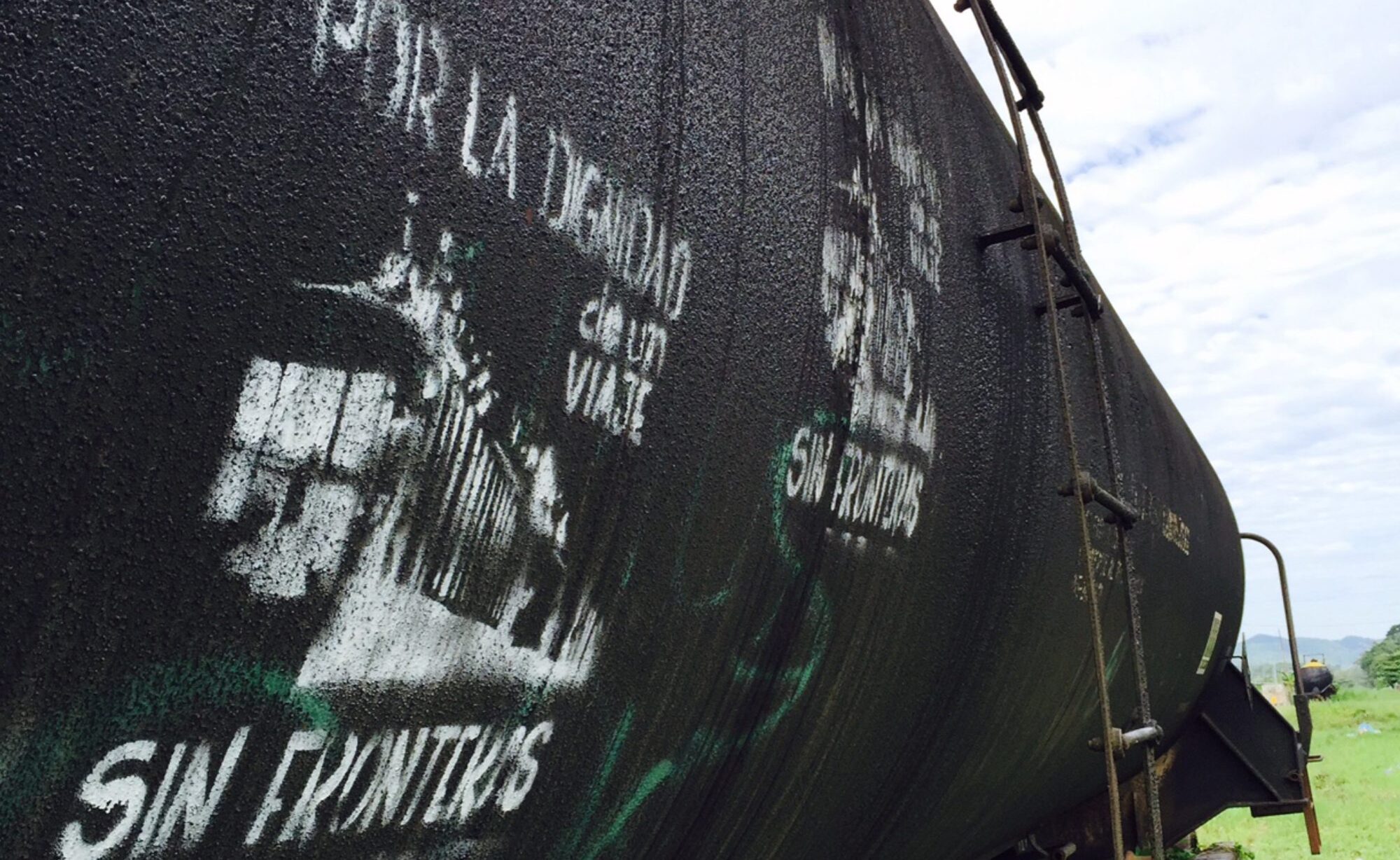In late February, I drove to see the Trump wall in Sasabe, Arizona. As soon as I parked, a green-striped Border Patrol vehicle stationed a quarter of a mile away began to creep down the dirt road toward us. Just ahead, a dystopian “No Trespassing” sign was flapping in the wind. It was cold as I stepped out of the car with my five-year-old son, William. The wall ahead of us, 30-feet high with steel bollards, was indeed imposing as it quavered slightly in the wind. Through its bars we could see Mexico, a broken panorama of hills filled with mesquites backed by a blue sky.
The Homeland Security vehicle soon pulled up next to us. An agent rolled down his window and asked me, “What are you doing? Joyriding?”
After I laughed in response to a word I hadn’t heard in years, the agent informed us that we were in a dangerous construction zone, even if this part of the wall had been built four months earlier. I glanced around. There were no bulldozers, excavators, or construction equipment of any sort. I wondered whether the lack of machinery reflected the campaign promise of the recently inaugurated Joe Biden that “not another foot” of Trump’s wall would be built.
Indeed, that was why I was here — to see what the border looked like as the post-Trump era began. President Biden had started his term with strong promises to reverse the border policies of his predecessor: families torn apart would be reunited and asylum seekers previously forced to stay in Mexico allowed to enter the United States. Given the Trump years, the proposals of the new administration sounded almost revolutionary.
And yet something else bothered me as we drove away: everything looked the same as it had for years. I’ve been coming to this stretch of border since 2001. I’ve witnessed its incremental disfigurement during the most dramatic border fortification period in this country’s history. In the early 2000s came an influx of Border Patrol agents, followed in 2007 by the construction of a 15-foot wall (that Senator Joe Biden votedfor), followed by high-tech surveillance towers, courtesy of a multi-billion-dollar contract with the Boeing Corporation.
Believe me, the forces that shaped our southern border over the decades have been far more powerful than Donald Trump or any individual politician. During the 2020 election, it was commonly asserted that, by getting rid of Trump, the United States would create a more humane border and immigration system. And there was a certain truth to that, but a distinctly limited one. Underneath the theater of partisan politics, there remains a churning border-industrial complex, a conjunction of entrenched interests and relationships between the U.S. government — particularly the Department of Homeland Security (DHS) — and private corporations that has received very little attention.
The small border town of Sasabe and its surrounding region is a microcosm of this.
The cumulative force of that complex will now carry on in Trump’s wake. Indeed, during the 2020 election the border industry, created through decades of bipartisan fortification, actually donated more money to the Biden campaign and the Democrats than to Trump and the Republicans.
Read the rest here as first published at TomDispatch.
